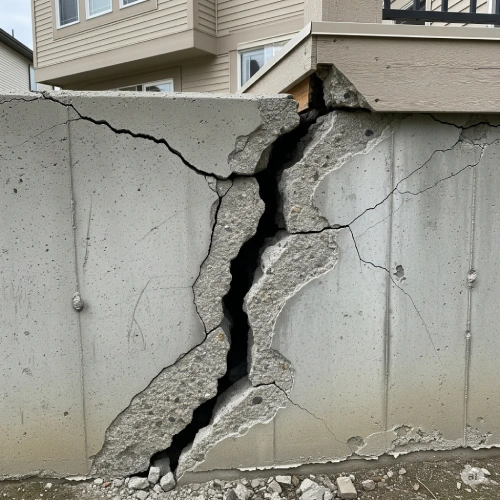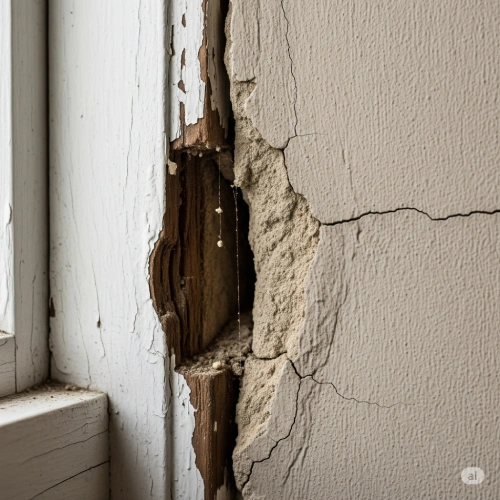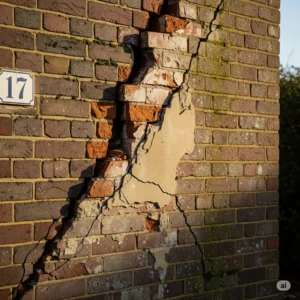Every Colorado homeowner shares a common, silent guardian: their home’s foundation. It’s the bedrock upon which your dreams are built, the unsung hero supporting every wall, roof, and cherished memory. But in a state as geographically diverse and climatically dynamic as Colorado, this silent protector faces unique challenges. From the dramatic shifts in our expansive soils to the relentless freeze-thaw cycles, Colorado homes are particularly susceptible to issues that can compromise their very core.
Ignoring the subtle (or sometimes not-so-subtle) signs of foundation problems Colorado can lead to significant structural damage, diminishing your home’s value and, more importantly, your family’s safety. This article isn’t just a list; it’s an experience-driven guide, pulling from years of observing how Colorado’s unique conditions impact our homes. We’ll equip you with the knowledge to identify the critical warning signs and, crucially, empower you with a clear plan for what to do next.
Table of Contents
ToggleUnderstanding Colorado's Foundation Challenges: More Than Just Dirt
Before diving into the specific signs, it’s vital to grasp why Colorado homes are so prone to foundation issues. It largely boils down to Soil Mechanics. Much of Colorado, especially along the Front Range, is characterized by highly reactive, clay-rich expansive soils. These soils are like sponges: they absorb water and swell significantly during periods of heavy rain or snowmelt, and then shrink dramatically when they dry out during droughts.
This constant swelling and shrinking creates immense pressure and movement beneath your home’s Foundation (building). Over time, this differential movement can exert tremendous stress on the Structural Load of the house, leading to cracking and displacement. Add to this the freeze-thaw cycle, where water in the soil freezes, expands, and then thaws, and you have a recipe for ongoing foundation stress. Understanding this geological dance is the first step to recognizing its impact on your home.
The 7 Critical Signs of Foundation Problems in Colorado Homes
Here are the key indicators that your home might be experiencing foundation distress:
1. Visible Foundation Cracks (and What They Tell You)
Not all cracks are created equal. While hairline cracks in concrete are often benign, significant foundation cracks are a major red flag. Look for cracks wider than 1/8 inch, those that are horizontal, or cracks that form a distinct stair-step pattern in concrete block or brick foundations. These often indicate differential settlement, where one part of the foundation is sinking faster than another. Horizontal cracks, especially in basement walls, can signal inward bowing due to significant external pressure from expansive soil issues. Regularly inspect your basement walls, exterior foundation, and crawl spaces.

2. Sloping or Uneven Floors
Do you ever feel like you’re walking uphill or downhill when moving through certain rooms? Or perhaps a marble rolls consistently to one side of the room? Sloping floors are a classic sign of foundation movement. When parts of your Foundation (building) settle unevenly, the floor joists above it follow suit, causing noticeable dips, slants, or humps in your flooring. This is a direct consequence of the house’s Structural Load shifting as its base moves.
3. Sticking Doors and Windows
Beyond just seasonal humidity, if doors and windows throughout your home suddenly become difficult to open or close, or worse, refuse to latch, your foundation could be the culprit. As the foundation shifts, it distorts the door and window frames, throwing them out of square. This puts direct stress on the Structural Load and can be an early indicator of underlying foundation distress. Don’t dismiss these as mere nuisances; they’re often a house’s way of telling you it’s hurting.
4. Gaps Around Window and Door Frames

Similar to sticking, if you start to notice visible gaps appearing where window or door frames meet the walls, it’s a strong sign of foundation movement. These gaps can be at the top, bottom, or sides of the frames, indicating that the overall structure of the house is shifting and stressing the framing elements. This is often accompanied by the feeling that the frames are no longer “true” or plumb.
6. A Slanted or Leaning Chimney
5. Wall Cracks (Especially Drywall and Brick)
A chimney should stand perfectly plumb. If you notice your chimney is visibly separating from the rest of the house or has a distinct lean, it’s a clear sign of localized foundation settlement. This often happens when the chimney’s footing settles independently, frequently due to poor compaction underneath or localized expansive soil issues that aren’t affecting the entire house foundation equally. It’s an unmistakable sign that professional attention is needed.
Beyond the foundation itself, cracks in your interior drywall, plaster, or exterior brick masonry are secondary, but critical, indicators. Look for vertical, horizontal, or stair-step cracks in these surfaces. While some minor settling cracks are normal in older homes, persistent or growing cracks, especially those accompanied by other signs, suggest a deeper issue. These cracks are your walls reacting to the stress caused by an unstable Foundation (building).
7. Heaving or Sinking Exterior Concrete (Patios, Driveways, Walkways)
While not directly part of your home’s foundation, a heaving walkway, cracking driveway, or sinking patio adjacent to your house can be a powerful precursor or accompanying symptom of broader issues. These concrete slabs are often subjected to the same expansive soil issues and poor drainage that affect your main foundation. Significant movement in these exterior elements can signal underlying soil instability and a potential threat to your home’s main Foundation (building).
What to Do Next: Taking Action for Your Colorado Home
If you’ve identified any of these signs of foundation problems Colorado, it’s natural to feel a sense of alarm. But here’s the critical takeaway: early detection is your best defense against extensive structural damage and costly repairs.
1.Document What You See: Take clear photos of all the signs. Note where they are, their size, and when you first noticed them. This documentation will be invaluable for professionals.
2. Consult with a Qualified Professional: This is not a DIY project. The complexities of Soil Mechanics in Colorado, combined with the significant Structural Load of your home, demand expert analysis. You need a reputable Foundation (building) repair specialist or a structural engineer with specific experience in Colorado’s unique challenges. They can accurately diagnose the problem and recommend appropriate solutions.
3. Understand the Inspection Process: A thorough inspection will involve examining the interior and exterior of your home, assessing drainage, and often using specialized tools to measure levels and movement.
4.Review Repair Options: Based on the diagnosis, professionals can offer various solutions, such as piering (push piers, helical piers) to underpin the foundation, drainage system improvements, soil stabilization techniques, or crack repairs. Each solution addresses specific issues, and a good professional will explain the best approach for your unique situation.
Why Choose an Experienced Colorado Structural Engineer ? (Experience-Driven Section)
In Colorado, “experience” isn’t just a buzzword; it’s a necessity. Our unique blend of geology, climate, and construction styles means that a foundation expert here needs more than just general knowledge. They need:
- Deep Understanding of Colorado’s Unique Geological Challenges: We’ve seen firsthand how unpredictable our clay soils can be, how a mild winter can lead to severe spring heaving, and how critical proper drainage is in our semi-arid climate.
- Experience with Local Building Codes and Permits: Navigating the regulatory landscape is crucial for ensuring repairs are compliant and long-lasting.
- A Focus on Long-Term Solutions: We’ve seen homeowners waste money on quick fixes that don’t address the root cause of the problem. Our approach focuses on permanent solutions that provide lasting stability for your home. We understand that every home’s foundation tells a story, and we’re here to interpret it and provide the right solution.
- A Guarantee of Complete Impartiality: As independent engineers, we have no financial interest in carrying out repairs or selling products, so our assessment is solely for your benefit.
- Providing Economical and Optimal Solutions: Our goal is to prepare an efficient and cost-effective repair plan, not to propose expensive options.
- Preventing Unnecessary Costs: By accurately diagnosing the problem, we eliminate the need for superfluous repairs and save you money.
Secure Your Colorado Home's Future Today
If you’ve noticed any of these signs of foundation problems Colorado, don’t wait for minor issues to become major structural damage. Procrastination often leads to more extensive, and expensive, repairs down the line. Protecting your investment and peace of mind starts with a proactive approach.
Contact Ista Engineers for a comprehensive foundation inspection. Our experienced team understands the specific challenges Colorado homes face and can provide expert advice tailored to your unique situation.
Conclusion: A Strong Foundation for Your Colorado Life
Your Colorado home is more than just an address; it’s an investment, a sanctuary, and the backdrop to your family’s life. Recognizing the signs of foundation problems Colorado is the first, crucial step in protecting that investment. Don’t let minor indicators escalate into major structural damage. With Colorado’s challenging soils and climate, a proactive approach and the expertise of local professionals are invaluable. Secure your peace of mind and the longevity of your home by addressing these critical signs head-on. A strong foundation ensures a strong future for your Colorado life.
FAQ
Q1: How much does foundation repair typically cost in Colorado?
Foundation repair costs in Colorado vary widely depending on the severity of the damage, the specific type of repair needed (e.g., piers, drainage, crack repair), and the accessibility of the affected area. A proper, comprehensive inspection is necessary to provide an accurate estimate. Be wary of anyone offering a fixed price without a thorough assessment.
Q2: Can I fix minor foundation cracks myself?
While some very minor hairline cracks might be cosmetic, any crack that is growing, horizontal, or wider than 1/8 inch should be assessed by a professional. Attempting DIY repairs on structural cracks can mask the underlying problem and lead to more significant structural damage down the line, especially with Colorado’s reactive soils. It’s always best to get a professional opinion.
Q3: What causes expansive soils in Colorado?
Colorado’s expansive soils are predominantly composed of bentonite clay minerals. These clays have a unique molecular structure that allows them to absorb large amounts of water, causing them to swell significantly. When they dry out, they shrink. This constant cycle of swelling and shrinking creates immense pressure on foundations, leading to movement and damage.
Q4: How long do foundation repairs last?
When performed by experienced professionals using high-quality materials and proven methods (like proper piering and drainage solutions), foundation repairs are designed to be permanent fixes. Many reputable companies offer transferable warranties on their work, ensuring long-term peace of mind.
Q5: Is a cracked basement floor always a sign of a foundation problem?
Not always. Hairline cracks in basement concrete floors are common due to normal concrete curing and minor settling of the slab itself, and are generally not indicative of major structural foundation issues. However, if you see wide cracks, significant heaving or sinking of the floor, or if they are accompanied by other signs of wall or exterior foundation problems, then it warrants a professional inspection. The main Foundation (building) walls are typically the critical indicator.




One Response